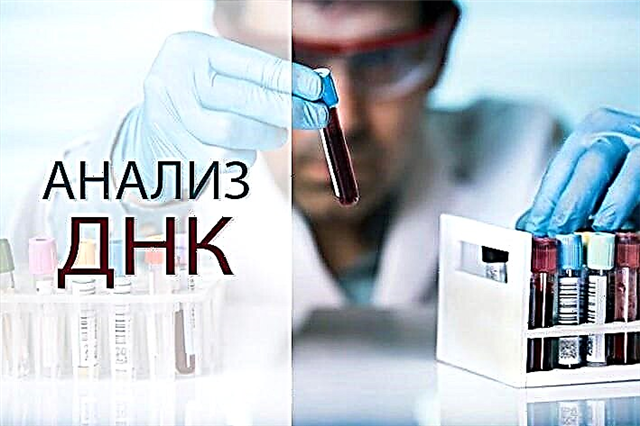
Determining ovulation by changing the nature of vaginal discharge is an affordable and reliable method that will help a woman better navigate the phases of her cycle, more effectively plan pregnancy and contraception, as well as a signal of possible violations of women's health.
What are the discharge before ovulation, this article will tell.
General information
The female body functions cyclically. And in a healthy woman of reproductive age, once a month the germ cell usually matures, which enables her to conceive a child. The germ cell matures in a follicle on the surface of the ovaries. And this process takes the first half of the menstrual cycle. In the middle of the cycle, the follicle membranes are thinned and ruptured, and the oocyte, ready for fusion with the sperm, leaves the vesicle and enters the abdominal cavity, and then is captured by the ampullary part of the fallopian tube. It is in it, under favorable circumstances, that fertilization will take place.
The process of release of a mature egg is called ovulation... It, like all other phases of the female menstrual cycle, is regulated by hormones: FSH promotes follicle growth, estrogen promotes the maturation of the egg and the production of luteinizing hormone, which thinns the follicular membranes and leads to their rupture.
The cervix and vaginal receptors are very sensitive to hormonal fluctuations, and therefore throughout the entire cycle, the discharge cannot remain the same - they change... And it is on this ability of theirs that the method for determining the fertile period is based - by the nature of the discharge, a woman can easily understand that she will soon ovulate and the most favorable time for conceiving a baby will come.
Discharge is a mixture of vaginal and cervical secretions... A special role is played by the fluid produced by the cervical canal - a thin isthmus inside the cervix that connects the vagina and the uterine cavity.
On days when conception is impossible due to the absence of an egg cell suitable for fertilization, cervical mucus protects the woman's reproductive organs from the penetration of pathogens and viruses. On days of high fertility, cervical mucus takes on additional responsibilities - its alkaline environment partially reduces the acidity of the vagina, which increases the chances of sperm to survive in an aggressive acidic environment, it helps male reproductive cells move faster, and, according to some researchers, is a porous filter that partially restrains the defective, defective germ cells of a man in order to increase the likelihood of conceiving a viable, healthy offspring.


Change in secretion - norms
In the first half of the female cycle, while the follicle is still maturing on the surface of the ovary, and an egg is developing in it, the secretions perform only their protective function, without taking part in the reproductive function. There are few of them, this period is called "dry". When the dominant follicle reaches a critical size and is ready to release an egg, estrogen levels rise, and LH hormone levels rise sharply. These changes cannot go unnoticed for the receptors of the cervical canal, which are sensitive to sex hormones. For them, this is a signal that soon it will be necessary to ensure the transport and safety of spermatozoa. Highlightedia increases 2-3 times, the cervical canal opens slightly, the cervix rises and softens.
Normally, pre-ovulation discharge is transparent, mucous, not only their quantity changes, but also the consistency - they are viscous, viscous.
If you stretch them between two fingers, they stretch a few centimeters, like a raw chicken egg white... It is this consistency of secretions that will help the male reproductive cells to survive, to survive the passage of the acidic environment of the vagina, as well as the cervical canal and the uterine cavity towards the egg cell that has come out of the follicle.


Characteristic mucus discharge before ovulation usually appears with the achievement of the estrogen peak, that is, 2-3 days before ovulation, sometimes 1-2 days... How much they should be like this depends on the actual day of ovulation. As soon as the follicular membrane ruptures, a temporary gland is formed at this place - the corpus luteum. It immediately begins secreting progesterone, another sex hormone, under the influence of which the entire second half of the female cycle passes.
Progesterone acts on cervical mucus, reducing its secretion, thickening it. Thus, within a day after ovulation or after 36 hours, the discharge begins to thicken. They become white, opaque, lose their viscosity, the amount of secretion decreases 2–3 times.
If pregnancy has occurred, then a mucous plug begins to form in the cervical canal, which will reliably close the uterine cavity from the penetration of the threat from the vagina throughout pregnancy, and only before childbirth it will come out.
In simple terms, the discharge remains viscous as long as the egg is alive and the female body has the ability to conceive. A woman's reproductive cell, according to statistics, lives from 24 to 36 hours. After that, she dies if conception has not occurred. Pregnancy in this cycle is no longer possible.

Possible pathologies
Many questions arise if real discharge differs from the classical norm described above. They can differ in quantity, color, and consistency.
Brown
Allocation with impurities of blood during the period before ovulation is normally unusual. A day after the rupture of the follicle, pink or brownish discharge is possible and normal, because during the rupture of the follicular membranes, the blood vessels that feed it are injured. But before ovulation, blood in the discharge is an alarming sign. Most often, dark bloody discharge indicates a hormonal imbalance.
In this case, the very fact of ovulation is called into question, it is possible that it will not happen if the level of hormones necessary to ensure this process is significantly disturbed.
Also, pre-ovulation bleeding in combination with unpleasant pain sensations (lower abdomen hurts, pulls the lower back, as before menstruation) is considered intermenstrual and needs medical advice, since the reasons can be different: from endometritis to malignant formation in the organs of the reproductive system.

Watery
The appearance of liquid, like water, secretions before ovulation is not directly related to the ovulatory process. This is usually a sign of vaginosis, infection, or fungal infection of the genital tract. Usually, such discharge is accompanied by an unpleasant odor, itching in the external genital area may be noted. A woman should definitely visit a gynecologist.


Creamy
If such discharge is not accompanied by any additional symptoms that cause discomfort, then 3-4 days before ovulation can be considered the norm. If the consistency is heterogeneous, the secretion is abundant, there is an unpleasant odor, this can indicate both a hormonal imbalance and an inflammatory process.
Sometimes such discharge on the expected day of ovulation indicates that there is no ovulation or it may be late. In this case, in the next few days, there is a normal mucous viscous "ovulation" discharge.
Yellow
Yellow and yellowish discharge can normally be observed only in the second phase of the menstrual cycle, this color is given to them by the progesterone background. Before ovulation, the appearance of a yellow color is a sign of a malfunction of the organs of the reproductive system, usually infection. So, in the early stages, gonorrhea, chlamydia may appear.

The unambiguously pathological discharge before ovulation includes curdled, purulent, greenish, gray and brown discharge, no matter how much they are presented. When such secretion appears, it is very important to immediately contact a gynecologist, get tested and start treatment.
Too abundant discharge in the period before ovulation, even if in appearance, consistency and other signs they are similar to normal, can also be a sign of pathology. The fact is that cervical secretion increases 3-4 times when any infection enters the cervical canal. That is, excessively abundant secretion is considered the very first sign of developing inflammation. This is not directly related to ovulation. AND the sooner you see a doctor, the more chances you have to defeat the disease with minimal losses in a short time.
You will learn more about the secretions before ovulation in the video below.



